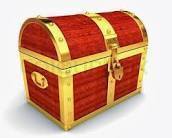Soviet Union

Basic Data:
-
Country ISO Code: SU (obsolete)
-
Official Language: Russian
-
Language ISO Code: ru
-
Official currency during existence: Soviet ruble
-
Currency ISO Code: SUR (obsolete)
Reason and History of Dissolution:
The Union of Soviet Socialist Republics (USSR) was established in 1922 and officially dissolved on December 26, 1991. The dissolution resulted from economic, political, and social crises, unsuccessful reforms, and the collapse of the communist system. After dissolution, the 15 republics that composed the USSR became independent states and adopted their own national currencies or temporarily continued using the Soviet ruble until new currencies were introduced.
Complete Financial History of the USSR
Currency: Soviet Ruble (SUR)
-
ISO Code: SUR
-
Designs / Symbols:
-
Coins and banknotes featured Soviet symbols such as the hammer and sickle, red star, USSR coat of arms, portraits of leaders, workers, peasants, soldiers, and images of industry and agriculture.
-
-
Singular name: Soviet ruble
-
Plural name: Soviet rubles
-
Subdivision: 1 ruble = 100 kopeks
-
Fraction singular: kopek
-
Fraction plural: kopeks
-
Initial production date: 1922
-
Final production date: 1991 (coins and banknotes circulated until 1993 in some post-Soviet countries)
-
Initial circulation date: 1922
-
Final circulation date: 1993 (transition to national currencies)
-
Mints: Leningrad Mint, Moscow Mint, and other Soviet mints
-
Issuing bank: Gosbank (State Bank of the USSR)
Coin denominations:
-
1, 2, 3, 5, 10, 15, 20, 50 kopeks; 1, 3, 5 rubles (higher denominations issued later)
Banknote denominations:
-
1, 3, 5, 10, 25, 50, 100, 200, 500, 1000 rubles (varied over time; successor states later issued notes up to 5000 rubles)
Economic Historical Context:
-
After the 1917 Russian Revolution, hyperinflation and monetary instability occurred, with high-denomination notes issued (millions and billions of rubles).
-
Between 1922 and 1924, a monetary reform introduced the chervonets (gold-backed currency) to stabilize the economy, later integrated into the Soviet ruble.
-
The Soviet ruble was a centrally controlled currency with issuance regulated by Gosbank.
-
In 1961, a monetary reform (Khrushchev reform) redenominated the ruble at a 10:1 ratio and devalued it against the US dollar.
-
The ruble was not freely convertible internationally and was mainly used within the Soviet bloc.
-
In the late 1980s and early 1990s, the USSR faced severe economic crises, rising inflation, and loss of confidence in the ruble, accelerating the country's dissolution.
Mints / Production Locations:
-
Leningrad Mint (now Saint Petersburg)
-
Moscow Mint
-
Other Soviet mints
Designs / Symbols on Coins and Banknotes:
-
Soviet symbols: hammer and sickle, red star, USSR coat of arms with globe, wheat, and communist slogans in multiple languages
-
Portraits of Vladimir Lenin and other Soviet leaders
-
Images of workers, peasants, soldiers, and industrial and agricultural achievements
Production Quantities / Honorees / Seals:
-
Large mintages of coins and banknotes with variations depending on reforms and economic needs
-
Commemorative silver and gold coins issued for anniversaries of the revolution, 1980 Moscow Olympics, and other events
Curiosities / Commemorative Coins:
-
Silver and gold commemorative coins marking the 50th anniversary of the October Revolution, 1980 Olympics, etc.
-
Some regular circulation coins also had commemorative versions
Current Circulation Status:
-
Out of circulation since 1993, replaced by national currencies of successor states (e.g., Russian ruble, Ukrainian hryvnia, Kazakh tenge, etc.)
Issuing Authority:
-
Gosbank (State Bank of the USSR)
Relevant Monetary Legislation:
-
Laws and decrees by the Supreme Soviet and Council of Ministers regulated issuance and circulation of the ruble
-
Monetary reforms in 1922–24, 1947, 1961, and others adjusted monetary policy and ruble value
Signatories on Banknotes:
-
Signatures of the Chairman of Gosbank and Minister of Finance of the USSR, varying by issuance
Persons Honored on Coins and Banknotes:
-
Vladimir Lenin (frequently featured on commemorative coins and banknotes)
-
Other Soviet leaders and symbols of communism and revolution
This report provides a comprehensive financial history of the Union of Soviet Socialist Republics, emphasizing the Soviet ruble as the official currency throughout the country's existence, its characteristics, economic context, monetary reforms, and the end of circulation following the USSR's dissolution in 1991.
 Nilton Romani
Nilton Romani
